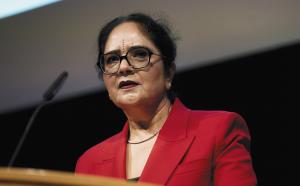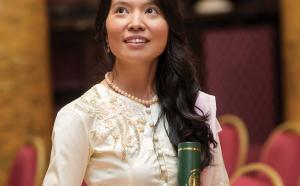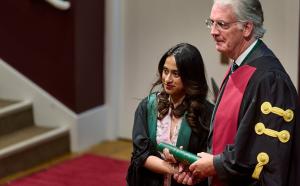
-
Impact
-
-
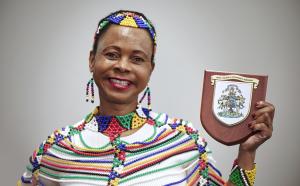 Across the GlobeFind out more about our work
Across the GlobeFind out more about our work -
Our Work
- Our Global Perspective
- Partnerships and Collaboration
- Quality Governance Collaborative
-
Celebrating Achievements
- Fellowship with Distinction
- Honorary Fellowship Nomination Form
- Medals and Prizes
- NCIA Awards
- National Honours
- New Fellows Ceremony
-
Inspiring Physicians
- Dr Catherine Monaghan
- Dr David Ewins
- Dr Indrajit Chatterjee
- Dr Jane Atkinson
- Dr John Mansfield
- Dr Kate Granger MBE
- Dr Saeed Ahmed
- Dr Sarah Keir
- Dr Vikramjit Mukherjee
- Dr. Jugal Kishor Sharma
- Professor Dr Byung In Lee
- Professor Frederich Christopher Otieno
- Professor John Starr
- Professor Kaushal K Verma
- Professor Khalid Mahmood
- Professor Peter Sandercock
- Dr Christopher Wells
- Professor Jane Metcalf
- Professor Paul Teelucksingh
- Journal
- Influence
-
Professor John Starr
Nominated by Dr Susan Shenkin, Senior Clinical Lecturer, University of Edinburgh.
In what way does the nominee inspire you?
Professor John Starr died suddenly on 8th December, 2018, aged just 58. He was an unconventional and unique figure, an inspiration to many. Many current students and doctors in training, and those who are now consultants themselves, were strongly influenced by John and carry his lessons and example with them. Who else would start a ward round with a review of a poem; or theme an entire ward round on collagenous diseases; or use only Renaissance paintings as the slides for an academic talk; or illustrate a complex MRI technique with an analogy using a mattress and a wine glass?
No one who trained with or worked with John, sat with him in a meeting, or who received his insightful – though illegible – comments on their draft manuscripts could fail to be influenced by such a unique, knowledgeable, perceptive, kind and gentle soul. His gentleness was, however, combined with a steely determination. He would never be bullied or intimidated, standing firmly for his ideas, and continually questioning. He was a key influence and guide into clinical research for many, and the sage voice we would turn to in times of doubt. One of his greatest gifts was his ability to truly nurture and mentor his trainees, including his influence during his time as Training Programme Director for South East Scotland.
His key hallmark was his focus on the individual at the centre of every encounter, treating them with respect and kindness. He is missed terribly, and this award would be a recognition of his influence throughout his all-too-short career.
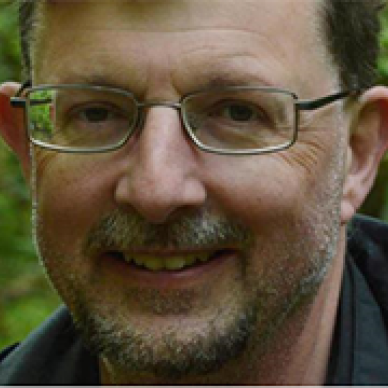
Nominee's personal contribution to medical practice and impact on care
John Starr graduated in Medicine from Cambridge and King’s College, London, including a History of Fine Arts degree. He came to Edinburgh as a research fellow in the Department of Psychiatry in 1989, investigating the relationship between blood pressure and cognition. After a two year senior registrar post at the renowned Hammersmith Hospital, London, he was appointed as consultant and part-time Senior Lecturer in Geriatric Medicine at the Royal Victoria Hospital in Edinburgh, and soon thereafter was promoted to an honorary Chair – Professor of Health and Ageing – at the University of Edinburgh.
He was a clinical academic, working as a consultant physician in Geriatric Medicine at the Royal Victoria Hospital and the Western General Hospital in Edinburgh.
His specialist interest was in dementia care, particularly for those with associated complex physical diseases. His particular passion was improving the care for older adults with intellectual disabilities, including adults with profound and multiple learning disabilities, which he did with compassion, humour, and immense enthusiasm.
His academic interests were broad and he had a wide-ranging interdisciplinary portfolio of research based around improving the understanding of cognitive ageing, dementia, and intellectual disability. His approach to questions was never restricted by traditional disciplinary boundaries, or conventional methods, and he had a particular talent for bringing novel approaches to questions.
Areas of research that he explored included using routinely collected data to understand the environmental epidemiology of dementia; the use of MR elastography to understand differences in brain structure and function; mathematical modelling to map the spread of Clostridium difficile infection; item response theory to simplify functional decline scales; noticing that brain imaging would include measures of neck muscles and so could study sarcopenia; realising that birth records could allow investigation of early life risk factors for cognitive decline; considering the use of hair samples, dental records or hat size measurements to consider early life determinants of health; and in an early paper estimating genetic relatedness between individuals by counting the number of great-grandmothers they shared.
In what way has the nominee shown their commitment to equality, diversity and inclusivity?
He was a strong advocate for groups who are traditionally disadvantaged, and often explained that you can judge society on how it treats the 'disadvantaged'. His academic and clinical work focussed on the least glamorous aspects of medicine such as dementia and intellectual impairment.
-
Impact
-
-
 Across the GlobeFind out more about our work
Across the GlobeFind out more about our work -
Our Work
- Our Global Perspective
- Partnerships and Collaboration
- Quality Governance Collaborative
-
Celebrating Achievements
- Fellowship with Distinction
- Honorary Fellowship Nomination Form
- Medals and Prizes
- NCIA Awards
- National Honours
- New Fellows Ceremony
-
Inspiring Physicians
- Dr Catherine Monaghan
- Dr David Ewins
- Dr Indrajit Chatterjee
- Dr Jane Atkinson
- Dr John Mansfield
- Dr Kate Granger MBE
- Dr Saeed Ahmed
- Dr Sarah Keir
- Dr Vikramjit Mukherjee
- Dr. Jugal Kishor Sharma
- Professor Dr Byung In Lee
- Professor Frederich Christopher Otieno
- Professor John Starr
- Professor Kaushal K Verma
- Professor Khalid Mahmood
- Professor Peter Sandercock
- Dr Christopher Wells
- Professor Jane Metcalf
- Professor Paul Teelucksingh
- Journal
- Influence
-

